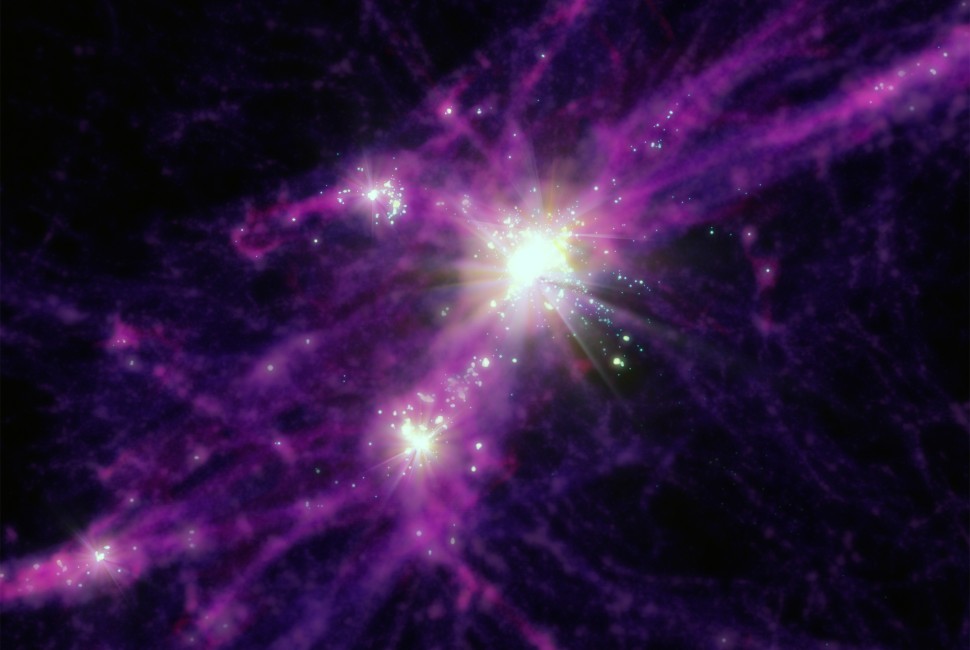When scientists viewed the James Webb Space Telescope’s (JWST) first images of the universe’s earliest galaxies, they were shocked. The young galaxies appeared too bright, too massive and too mature to have formed so soon after the Big Bang. It would be like an infant growing into an adult within just a couple years.
The startling discovery even caused some physicists to question the standard model of cosmology, wondering whether or not it should be upended.
Using new simulations, a Northwestern University-led team of astrophysicists now has discovered that these galaxies likely are not so massive after all. Although a galaxy’s brightness is typically determined by its mass, the new findings suggest that less massive galaxies can glow just as brightly from irregular, brilliant bursts of star formation.
Not only does this finding explain why young galaxies appear deceptively massive, it also fits within the standard model of cosmology.
The research was published today in the Astrophysical Journal Letters.
“The discovery of these galaxies was a big surprise because they were substantially brighter than anticipated,” said Northwestern’s, Claude-André Faucher-Giguère, the study’s senior author. “Typically, a galaxy is bright because it’s big. But because these galaxies formed at cosmic dawn, not enough time has passed since the Big Bang. How could these massive galaxies assemble so quickly? Our simulations show that galaxies have no problem forming this brightness by cosmic dawn.”
“The key is to reproduce a sufficient amount of light in a system within a short amount of time,” added Guochao Sun, who led the study. “That can happen either because the system is really massive or because it has the ability to produce a lot of light quickly. In the latter case, a system doesn’t need to be that massive. If star formation happens in bursts, it will emit flashes of light. That is why we see several very bright galaxies.”
Faucher-Giguère is an associate professor of physics and astronomy at Northwestern’s Weinberg College of Arts and Sciences and a member of the Center for Interdisciplinary Exploration and Research in Astrophysics (CIERA). Sun is a CIERA Postdoctoral Fellow at Northwestern.
A period that lasted from roughly 100 million years to 1 billion years after the Big Bang, cosmic dawn is marked by the formation of the universe’s first stars and galaxies. Before the JWST launched into space, astronomers knew very little about this ancient time period.
“The JWST brought us a lot of knowledge about cosmic dawn,” Sun said. “Prior to JWST, most of our knowledge about the early universe was speculation based on data from very few sources. With the huge increase in observing power, we can see physical details about the galaxies and use that solid observational evidence to study the physics to understand what’s happening.”
In the new study, Sun, Faucher-Giguère and their team used advanced computer simulations to model how galaxies formed right after the Big Bang. The simulations produced cosmic dawn galaxies that were just as bright as those observed by the JWST. The simulations are part of the Feedback of Relativistic Environments (FIRE) project, which Faucher-Giguère co-founded with collaborators at the California Institute of Technology, Princeton University and the University of California at San Diego. The new study includes collaborators from the Flatiron Institute’s Center for Computational Astrophysics, Massachusetts Institute of Technology and University of California, Davis.



